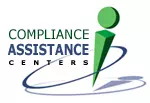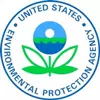Toxic Substances Control Act (TSCA)
Introduction
Over 75,000 different industrial chemicals are currently being produced or imported into the U.S. The Toxic Substances Control Act (TSCA) was enacted in 1976 to give EPA the authority to control unreasonable risks associated with manufacturing and using those chemicals. The law creates a regulatory framework that allows EPA to collect data needed to assess the risks, to require special reporting or testing requirement, or if necessary to ban the production or importation of specific chemicals.
Healthcare facilities may be subject to TSCA through:
- Lead hazard reduction regulations
- Polychlorinated Biphenyls (PCB) hazard reduction regulations
- Asbestos hazard reduction regulations
Hexavalent chromium compounds have historically been used for water treatment in industrial cooling towers. These compounds are also subject to TSCA requirements. Phosphate based chemicals are available as a replacement.
It is important to note that pesticides do not fall under TSCA, but under a separate act, the Federal Insecticide, Fungicide, and Rodenticide Act (FIFRA). See the HERC page on FIFRA for more information.
PFAS are a group of manufactured chemicals that have been used in industry and consumer products since the 1940s because of their useful properties. There are thousands of different PFAS, some of which have been more widely used and studied than others.
In the healthcare industry, PFAS are commonly used in a wide range of medical devices because of their biocompatibility, stiffness, long life, chemical resistance, anti-stick properties, low moisture absorption and durability.
Current scientific research suggests that exposure to certain PFAS may lead to adverse health outcomes. However, research is still ongoing to determine how different levels of exposure to different PFAS can lead to a variety of health effects. Research is also underway to better understand the health effects associated with low levels of exposure to PFAS over long periods of time, especially in children.
In June 2023, EPA released a framework for addressing uses of PFAS under the Toxic Substances Control Act (TSCA). The framework will ensure that before these chemicals are allowed to enter commerce, EPA will undertake an extensive evaluation to ensure they pose no harm to human health and the environment.
In October 2023, EPA published a final rule in the Federal Register that will provide EPA, its partners, and the public with the largest-ever dataset of PFAS manufactured and used in the United States. This final rule under the Toxic Substances Control Act (TSCA) will require all manufacturers (including importers) of PFAS and PFAS-containing articles in any year since 2011 to report information to EPA on PFAS uses, production volumes, disposal, exposures, and hazards (more information).
Any entities, including small entities, that have manufactured (including imported) PFAS in any year since 2011 will need to report their data to EPA through Central Data Exchange (CDX). When the submission period begins, manufacturers will have six months to provide their data.
In September 2024, EPA announced a direct final rule and a parallel proposed rule to delay the reporting period for this rule. The reporting period was scheduled to begin on November 12, 2024, but the final rule delays the beginning of the reporting period until July 2025 due to budgetary constraints.
This direct final rule changes the data submission period to open on July 11, 2025 when the Agency expects the software reporting application to be fully functional. Most reporters would be required to complete all reporting by January 11, 2026. Small businesses reporting data solely on importing PFAS contained in articles will have until July 11, 2026 to submit reports.
TSCA regulations for PCBs
PCBs, or "polychlorinated biphenyls", are organic compounds that were in widespread use for many years in electrical equipment (such as heavy-duty power transmission equipment), and in many plastic, rubber, and paint formulations. Because of their toxicity and their persistence in the environment, their production in the U.S. was phased out in the late 1970s. Concern over PCBs was one of the reasons that TSCA was enacted.
The TSCA PCB regulations and requirements apply to both PCB waste materials and PCBs still in use. Because of potential harmful effects on human health and the environment, federal law banned U.S. production of PCBs as of July 2, 1979. However, PCB-containing materials may be present at facilities and PCB-laden wastes may be generated during renovations.
Items with a PCB concentration of 50 parts per million (ppm) or greater are regulated for disposal under 40 CFR Part 761. Some potential sources of PCBs include:
- Mineral-oil filled electrical equipment such as motors or pumps manufactured prior to July 2, 1979
- Capacitors or transformers manufactured prior to July 2, 1979
- Plastics, molded rubber parts, applied dried paints, coatings or sealants, caulking, adhesives, paper, Galbestos, sound-deadening materials, insulation, or felt or fabric products such as gaskets manufactured prior to July 2, 1979
- Fluorescent light ballasts manufactured prior to July 2, 1979
- Waste or debris from the demolition of buildings and equipment manufactured, serviced, or coated with PCBs
- Waste containing PCBs from spills, such as floors or walls contaminated by a leaking transformer
The general requirements for handling PCB materials and equipment include: identifying and labeling the material, notifying EPA, properly storing the material, and properly disposing of the material.
TSCA regulations for asbestos
EPA and OSHA have promulgated rules regulating asbestos production, use, and disposal. OSHA regulates private sector and some public sector employees’ exposure to asbestos and specifies work practices and engineering controls for removing and handling asbestos. Along with EPA and OSHA, some states also have established asbestos requirements that extend the federal requirements. Asbestos programs implemented under TSCA include the following:
- Asbestos Hazard Emergency Response Act (AHERA), which regulates asbestos contained in schools and all public and commercial buildings including hospitals; requires the development of management plans; specifies work practices and engineering controls for removing and handling asbestos; and sets emissions limitations in schools after an abatement activity is completed.
Common areas for inspections
Typical physical features to inspect for lead-based paint, PCBs, and asbestos under TSCA:
- PCB storage areas
- Equipment, fluids, and other items used or stored at the facility containing PCBs. PCBs are most likely to be found in electrical equipment such as transformers, capacitors, and possibly fluorescent light ballasts (in older fixtures)
- Pipe, spray-on, duct, and troweled cementitious insulation and boiler lagging
- Ceiling and floor tiles
More resources
TSCA
- EPA’s TSCA Assistance Information Service, at (202) 554-1404 (e-mail: tscahotline@ epa.gov), answers questions and distributes guidance pertaining to TSCA standards. The Service operates from 8:30 a.m. through 5:00 p.m., EST, excluding federal holidays.
Lead
- For more information on TSCA programs for lead, visit EPA’s lead web site.
PCBs
- EPA’s PCB Homepage includes links to the regulatory text (40 CFR Part 761) as well as lists of approved PCB waste handlers: https://www.epa.gov/pcbs
- PCB Question and Answer Manual [PDF]
Asbestos
- EPA operates the Asbestos Ombudsman Clearinghouse/Hotline (800-368-5888, or (202-260-0490) to provide general asbestos information.
- EPA’s main Asbestos web page



